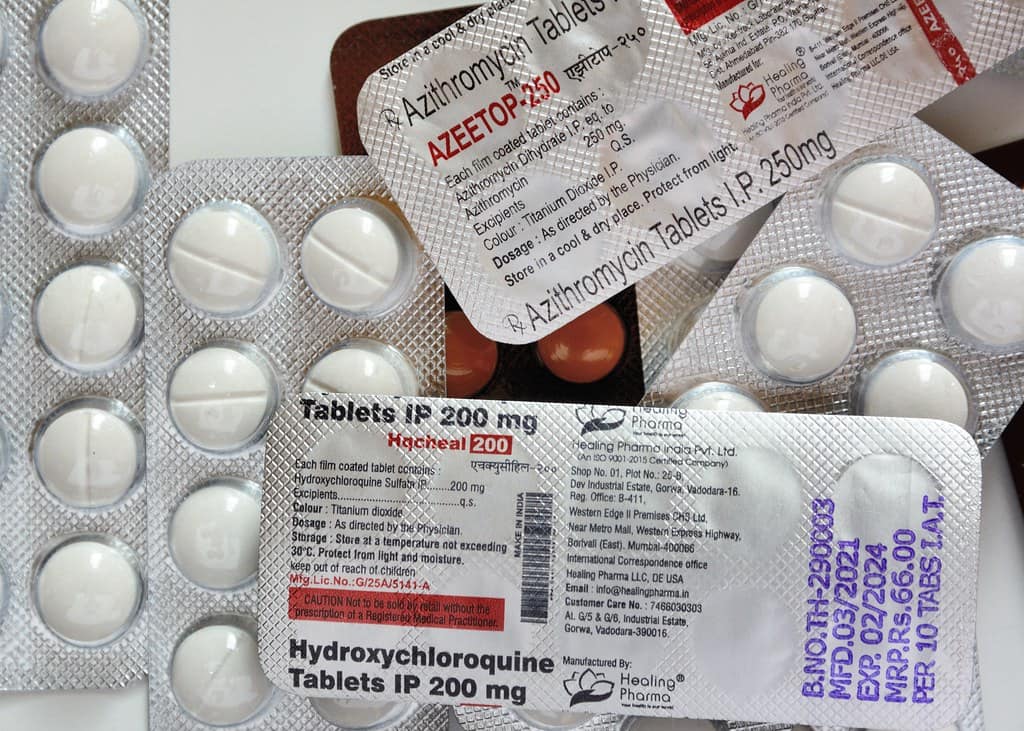
No one really wants to look back on the early days of the pandemic. It was chaotic, it was scary, it was traumatic. A lot of people were killed by the virus. But a lot of people were also killed by bad decisions. According to a new study, hydroxychloroquine was one of those bad decisions.
Hydroxychloroquine’s Shadow: The Unseen Toll of COVID-19’s First Wave
In December 2019, the world was learning of a new adversary, SARS-CoV-2, the virus responsible for the COVID-19 pandemic. As nations scrambled for treatments, people looked to existing drugs that were used for other conditions. In this context, one malaria drug, hydroxychloroquine (HCQ), emerged as a potential candidate.
Time was of the essence. The world was faced with the biggest health emergency in a century and solutions were scarce. Plenty of small, incomplete studies were coming up. This was also the case with HCQ. Initially, it seemed potentially promising in small-scale trials, but no larger trials confirmed its efficacy. Out of desperation, it was considered a potential treatment — but it wasn’t long before the reality kicked in. Not only was hydroxychloroquine not good against COVID-19, but there were also serious side effects.
A recent study shed light on just how bad hydroxychloroquine was for the pandemic. Not only did it not do anything, but it actually killed around 17,000 people in just six countries — through its side effects and its prioritization over other treatments that actually worked.
“HCQ use was associated with an 11 per cent increase in the mortality rate in a meta-analysis of randomised trials,” the study noted, citing a meta-analysis published in 2021 in Nature which the researchers used to calculate the number of deaths induced by the drug.
Prescribing HCQ
The rush to endorse HCQ, fueled by preliminary reports and regulatory authorizations, led to its widespread use. However, its efficacy remained unproven, and the side effects, particularly cardiac risks, soon became evident. The RECOVERY trial highlighted a significant increase in cardiac mortality and a trend towards increased all-cause mortality risk with HCQ.
But by the time studies were casting doubts on HCQ, countries were already prescribing it.
The variability in HCQ prescription rates across countries was striking, ranging from 16% in France to 84% in Spain. This disparity reflected not only the drug’s perceived efficacy but also the influence of early, optimistic reports and regulatory decisions on prescribing practices.
Even as new and better science was coming in, some political leaders kept pushing for HCQ as a “wonder cure”. In particular, then-US President Donald Trump advocated for it, as did then-president of Brazil Jair Bolsonaro. Despite the science that was coming in and showing that HCQ was not a cure, the push for HCQ continued for months.
The Real Toll Is Higher
The researchers note that this death toll is likely massively underestimated. Furthermore, the study only looked at six countries (Belgium, France, the USA, Turkey, Italy, and Spain) — the real global toll is probably much higher.
“What we need to bear in mind is that this is a rough estimate, in the sense that it only concerns a few countries over a short period, and that the total number of deaths is probably much higher,” Jean-Christophe Lega, a Professor of Therapeutics in the Lyon, France hospital system, told French broadcaster France 3.
This study serves as a cautionary tale about the dangers of hastily repurposing drugs without solid evidence. It underscores the importance of rigorous evaluation and controlled clinical trials in determining the efficacy and safety of treatments. It’s perfectly normally to try solutions that aren’t guaranteed in a crisis — but as the new data comes in, we should adapt and improve our understanding.
Perhaps most importantly study sheds light on how early endorsements and regulatory decisions can significantly influence prescribing practices. This insight is valuable for health authorities and policymakers in managing drug approvals and recommendations, especially during emergencies.
The worst of the COVID-19 pandemic seems to be behind us, but with pandemics increasingly likely to develop, we may be faced with similar decisions soon. Hopefully, we’ll make the right one.
The study was published in the journal Biomedicine and Pharmacotherapy.









